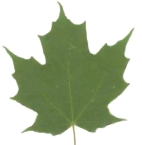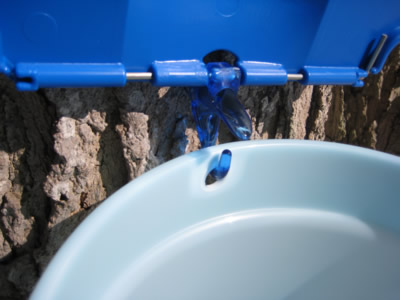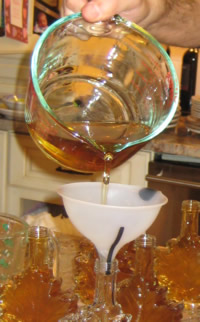How Maple Syrup is Made
Maple syrup is made solely from maple sap, and the best tree for this is aptly named the Sugar Maple (Acer saccharinum). You can best identify them by the shape of their leaves, however when it's time to tap them, they won't have leaves, so you should identify them beforehand.

Maple season occurs in the late winter to early spring when the temperature is below freezing at night and above during the day. Once the trees start budding, the resulting syrup will be dark and bitter.
Holes are drilled 2 inches into mature trees and spouts, or "spiles", are then tapped into the tree. At best, maple sap contains only about 3% sugar and is mostly water, and will slowly drip out into buckets hung on the spiles. Each tree can produce about 10 gallons per season. Although this sounds like a lot, it takes about 40 gallons of sap to make 1 gallon of syrup.

Syrup is made by removing most of the water until the right concentration is achieved. Specialized evaporators with large, shallow pans boil the sap over a constant hot fire, producing lots of steam and smoke.
evaporator pans
As the syrup thickens, the boiling temperature increases from 212° Fahrenheit to about 219° degrees. The syrup is then filtered and bottled or canned while still hot. Nothing else is added - no flavoring or coloring. There is only one ingredient and it comes right from the tree.

The color, or grade, of the syrup is mostly dependent upon when the syrup is made in the season. Lighter grades (golden, amber) are a product of the early part of the season, and continue to darken through the end.
